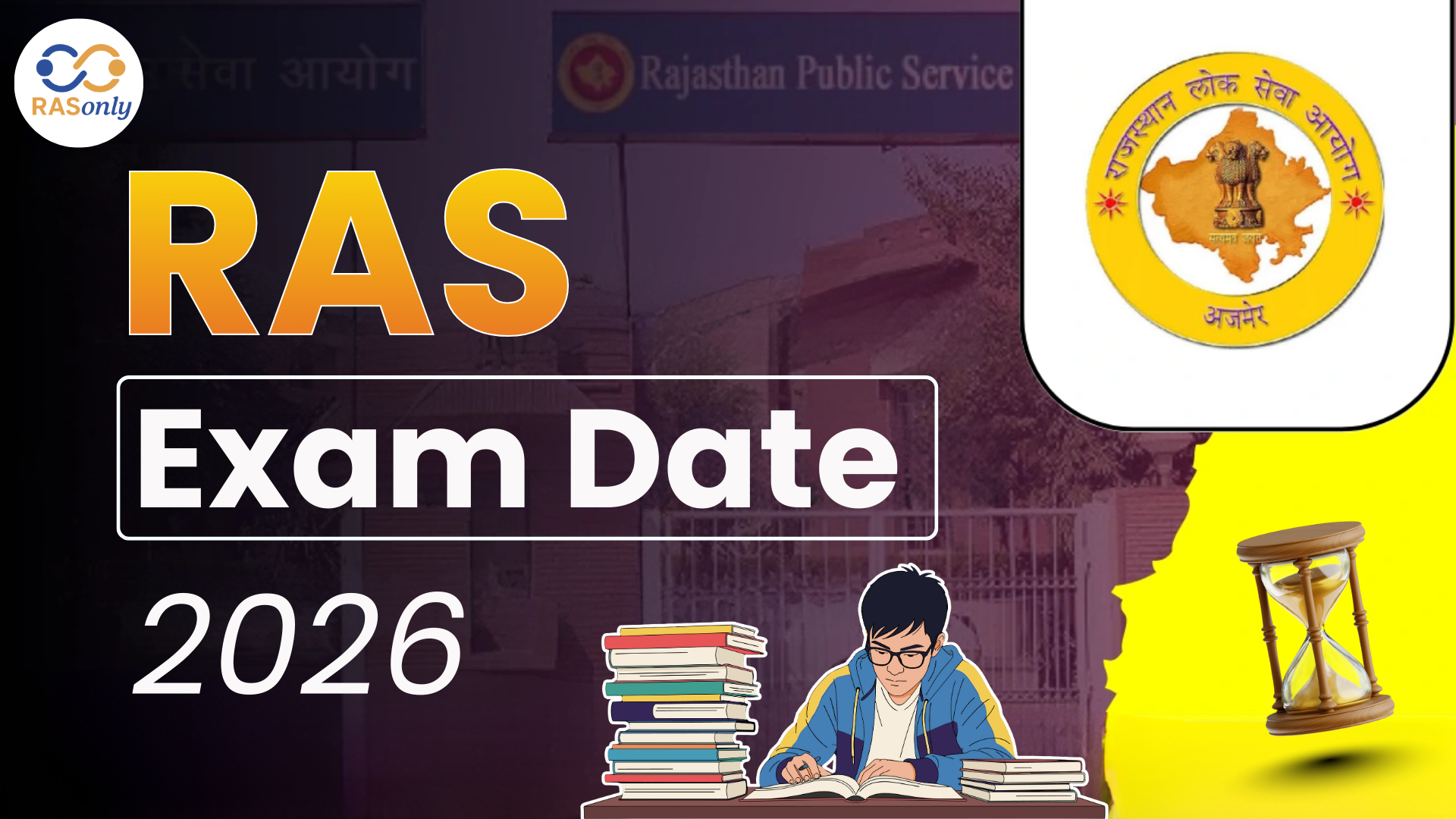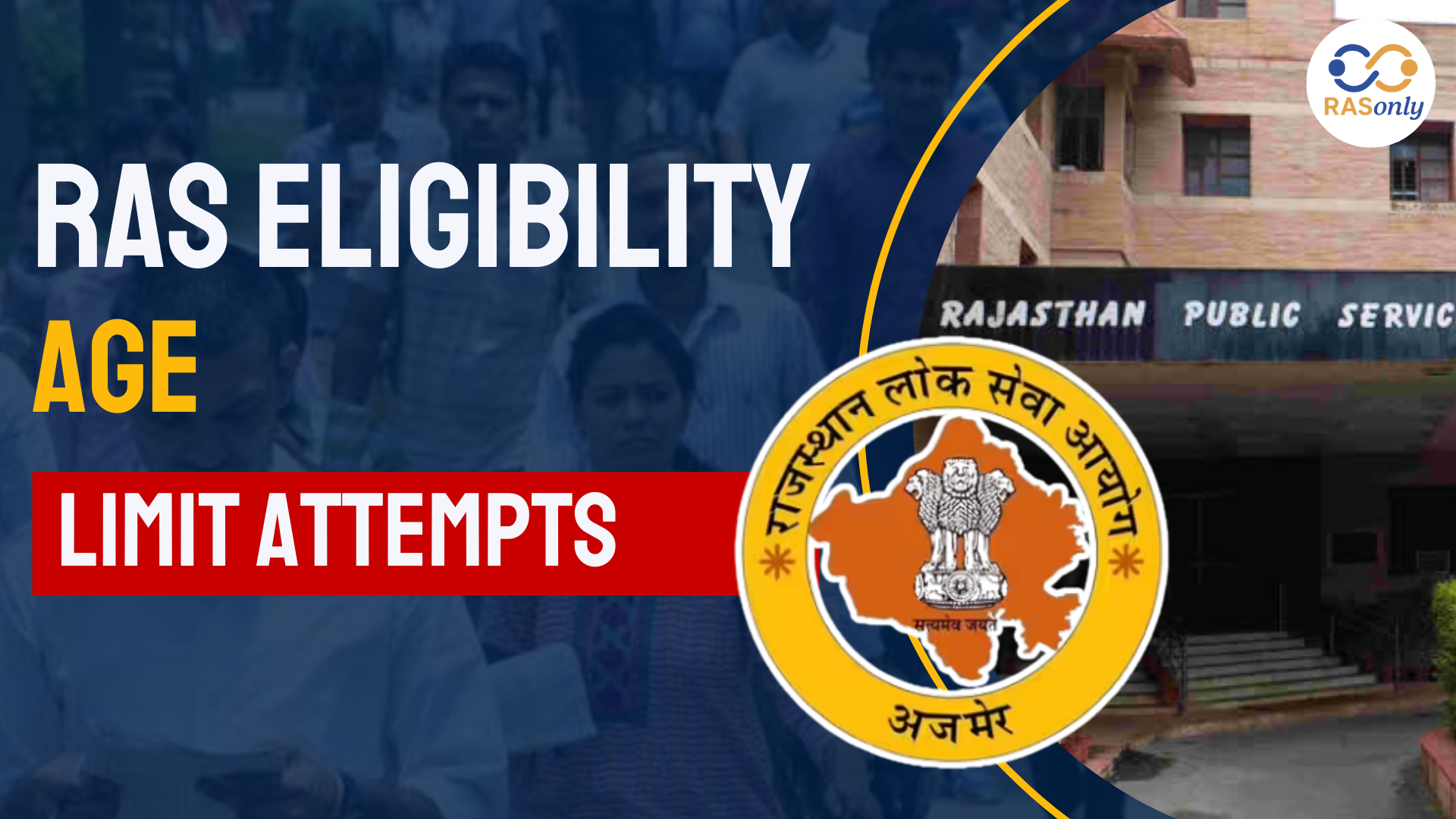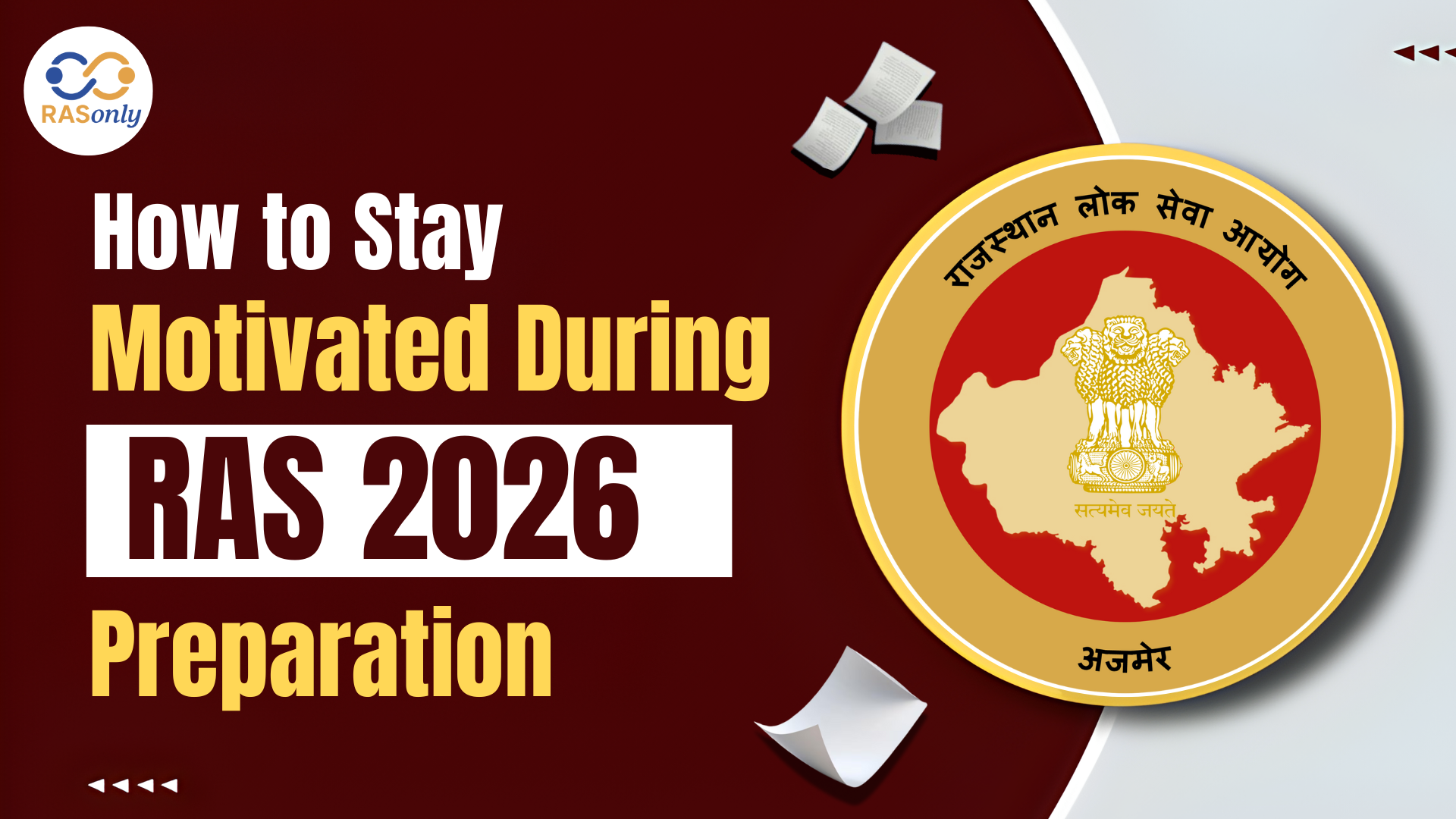RAS Exam Date 2026 for Notification, Prelims, Mains Date
- >
- RAS Preparation Resources
- >
- Vegetation of Rajasthan: Diversity and Adaptations
Vegetation of Rajasthan: Diversity and Adaptations


Rajasthan's vegetation reflects its diverse geography, ranging from arid deserts to sub-humid regions. The state has 9.57% forest area, dominated by tropical dry deciduous and thorn forests. Vegetation types vary across Aravalli, desert, and riverine zones. Key species include khejri, rohida, dhok, and babool. Conservation efforts include afforestation programs and protected forest status.
Context
Rajasthan, India’s largest state by area, experiences a wide range of climatic and edaphic (soil-related) conditions. Despite being largely arid and semi-arid, it supports diverse natural vegetation.
Key Points for RAS Mains
Forest Area and Coverage
|
Parameter |
Value |
|
Total Forest Area |
32,862.5 sq.km (9.60% of total area) |
|
Forest Cover |
16,629 sq.km (4.86%) |
|
Tree Cover |
8,112 sq.km (2.36%) |
District-wise Highlights
- Highest Forest Area (by sq.km):
- Udaipur (2,757)
- Alwar (1,197)
- Pratapgarh (1,038)
- Baran (1,011)
- Lowest Forest Area (by sq.km):
- Churu (82)
- Hanumangarh (90)
- Jodhpur (108)
- Largest Increase in Forest Cover:
- Barmer, Jaisalmer, Dungarpur
- Largest Decrease in Forest Cover:
- Udaipur, Pratapgarh, Jhalawar
Classification of Forests
1. Legal/Administrative Classification (as per State Forest Act, 1953)
|
Type |
% of Total Forest |
Major Region |
Restrictions |
|
Reserved Forest |
37.05% |
Udaipur |
Complete ban on cutting, grazing |
|
Protected Forest |
56.43% |
Baran |
Regulated use allowed |
|
Unclassified Forest |
6.52% |
Bikaner |
No restriction on use |
2. Geographical Classification (Based on Rainfall)
|
Forest Type |
Rainfall |
Forest Area |
Major Regions |
Major Species |
|
Tropical Thorny Forests |
0–30 cm |
6% |
Jaisalmer, Bikaner, Barmer, Jodhpur |
Cactus, Aloe Vera, Thorny shrubs |
|
Tropical Dhok Forests |
30–60 cm |
58% |
Nagaur, Shekhawati, Luni Basin |
Dhok, Khejri, Rohida, Acacia, Ber |
|
Tropical Dry Deciduous Forests |
50–80 cm |
28% |
Alwar, Bharatpur, Udaipur |
Sal, Teak, Rosewood, Mango, Sandalwood |
|
Tropical Teak Forests |
75–110 cm |
7% |
Banswara, Kota, Jhalawar, Dungarpur |
Teak, Tendu, Gular, Mahua |
|
Sub-Tropical Evergreen Forests |
Over 150 cm |
1% |
Mount Abu |
Bamboo, Jamun, Dicliptera abu ansis |
Important Trees and Their Uses
|
Tree Species |
Region |
Cultural/Economic Importance |
|
Khejri (State Tree) |
Western Rajasthan |
Worshipped during Dussehra; fodder, soil fertility |
|
Rohida |
Western Rajasthan |
Known as ‘Teak of Desert’; valuable timber |
|
Mahua |
Dungarpur |
Tribal Kalpavriksha; liquor-making from flowers |
|
Palash |
Across Rajasthan |
Flame of Forest; medicinal and dye use |
|
Tendu |
Pratapgarh, Chittorgarh |
Used in bidi-making; nationalized in 1974 |
|
Jamun |
Mount Abu, Ajmer |
Medicinal use (diabetes) |
|
Khair |
Udaipur, Chittorgarh |
Produces 'Katha' for betel leaf |
|
Mulberry |
Udaipur |
Supports silk production |
Grasslands of Rajasthan
|
Grass Type |
Region |
Importance |
|
Sewan (Leelon) |
Jaisalmer |
Feed for livestock; shelter for Godawan bird |
|
Dhaman |
Jaisalmer |
Fodder for milch animals |
|
Bamboo |
Banswara |
“Green Gold”; used in construction, crafts |
|
Khas |
Bharatpur, Ajmer |
Used in perfumes and syrups |
|
Bur Grass |
Bikaner |
Aromatic; perfume industry |
|
Mochia |
Churu (Tal Chhapar) |
Crucial to local biodiversity |
Major Afforestation Programs in Rajasthan
|
Program/Policy |
Duration/Year |
Focus Area & Goals |
|
Desert Afforestation Program |
1977–78 |
Green cover in 10 desert districts |
|
Aravalli Afforestation Plan |
1992 |
Supported by Japan; restore Aravalli forest lands |
|
Rajasthan Forest & Biodiversity Project |
2003–19 |
Biodiversity protection (JICA-funded) |
|
Harit Rajasthan Yojna |
2009–2014 |
5-year tree plantation drive |
|
Van Dhan Yojna |
2015 onwards |
Empower forest dwellers; promote sustainable forest use |
Awards for Conservation
|
Award Name |
Introduced |
Focus |
Example Winner(s) |
|
Amrita Devi Bishnoi Award |
1994 |
Forest/wildlife protection |
Om Singh, Satnam Singh |
|
Indira Priyadarshini Vriksh Mitra |
– |
Afforestation & wasteland dev. |
₹2.5 lakh |
|
Rajeev Gandhi Environmental Award |
2012 |
Environment Day Award |
– |
|
Kailash Sankhala Wildlife Award |
– |
Wildlife protection |
₹50,000 |
|
Vanpal Award |
– |
Forest staff recognition |
– |
Forest Policies Over Time
|
Year |
Policy/Act Name |
Focus |
|
1894 |
First Forest Policy (British) |
Resource exploitation |
|
1952 |
Independent India’s Forest Policy |
Conservation + public needs |
|
1988 |
National Forest Policy |
33% forest cover goal |
|
2010 |
Rajasthan State Forest Policy |
20% forest area goal |
|
2020 |
Rajasthan State Eco-Tourism Policy |
Promote conservation via eco-tourism |
Related Institutions
- AFRI (Arid Forest Research Institute) – Jodhpur: Forest research in arid regions.
- CAZRI (Central Arid Zone Research Institute) – Jodhpur: Sustainable development of desert zones.
Important Environmental Days in Rajasthan
- World Forestry Day – 21 March
- World Environment Day – 5 June
- Van Mahotsav – 1–7 July
- Wildlife Week – 1–7 October
- International Biodiversity Day – 22 May
Biological parks in Rajasthan
- Sajjangarh Biological Park (Udaipur )
- Close to Monsoon Palace; lions, tigers and leopards.
- Machia Safari Park (Jodhpur)
- Close to Kaylana Lake, a desert creature(Of big cats) .
- Nahargarh Biological Park (Jaipur)
- Near Kaylana Lake; desert animals and big cats.
- Narayan Singh Abheda Biological Park (Kota-Under Construction)
- In Nanta; to promote Hadoti tourism.
- Marudhara Bio Park (Bikaner – In progress)
- Near Beechwali; desert wildlife area of concern.
Conclusion for RPSC
Rajasthan bears the negative climatic set-up of the state that finds vegetation in the form of arid to semi-arid climate where the prevailing species are comfortable in high temperature and with low precipitation. Biodiversity is regional as we have thorny bushes in the Thar Desert and dry deciduous forests in the Aravallis. The flora sustains the rural livelihoods and wildlife despite the adverse conditions. The conservation of the ecological balance is imperative in the state through afforestation.
Post Category
- RAS Salary
- Result
- RAS Admit Card
- RAS Job
- RAS Cutoff
- Preparation Tips
- RAS Answer Key
- RAS Exam Analysis
- RAS Syllabus
- RAS Previous Year Papers
- RPSC RAS Exam Pattern
- RAS Interview
- RAS Mains Exam Date
- RAS Vacancy
- RAS Test Series
- RAS Best Books
- RAS Preparation Resources
- RAS Coaching Centre
- History
- Polity
- Geography
- Economics
- Science
- Art and Culture
- RPSC RAS Application Form
- RPSC RAS Notification
RASonly Interview Guidance Program

Mr. Ashok Jain
Ex-Chief Secretary Govt of Rajasthan
- IAS officer of the 1981 batch, Rajasthan cadre.
- Passionate about mentoring the next generation of RAS officers with real-world insights.
- Got retired in Dec 2017 from the post of Chief Secretary of the state of Rajasthan.

Mr. Guru Charan Rai
Ex-ASP / SP in Jaisalmer
- Guru Charan Rai, IPS (Retd), retired as Inspector General of Police (Security), Rajasthan, Jaipur in 2017.
- Served as ASP and SP in Jaisalmer, Nagaur, Sri Ganganagar, Sawai Madhopur, Dausa, Sikar, and Karauli.
- He also held key positions as DIGP and IGP in the Law and Order division.

Mr. Rakesh Verma
Ex-IAS Officer, B.Tech, MBA, and M.A. (Economics)
- IAS officer of the 1981 batch and retired in Chief Secretary Rank.
- Civil servant of high repute and vast experience.
- Has been teaching UPSC CSE subjects for the last six years.
Related Post
👉🏻 Register Today to Join Classes! 👍🏻
- Team RASOnly -
🎯 Benefits of RASOnly Coaching:
- ✅ 1:1 Mentorship with RAS Officers
- ✅ Experienced and Expert Faculty
- ✅ Free Library Access
- ✅ Daily Minimum 4 Hours Must
- ✅ Comprehensive Study Material
- ✅ Regular Tests & Performance Analysis
- ✅ Personalized Guidance & Doubt Solving
- ✅ Online & Offline Class Options
- ✅ Affordable Fees with Quality Education
Key Highlights:
- 👉🏻 3-Day Refund Policy
- 👉🏻 New Batch Starting from 04 August
- 👉🏻 Registration Amount: Only ₹1000





